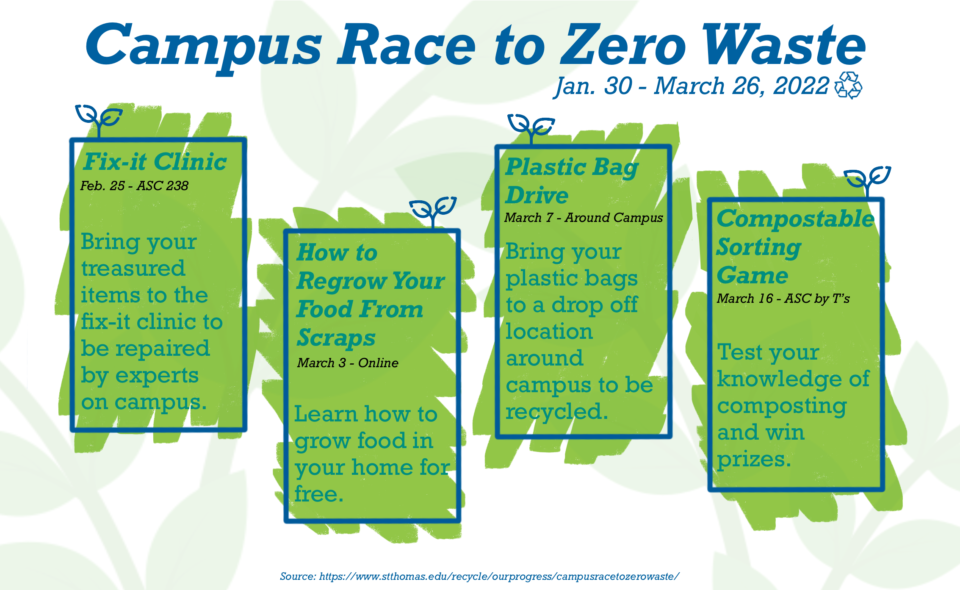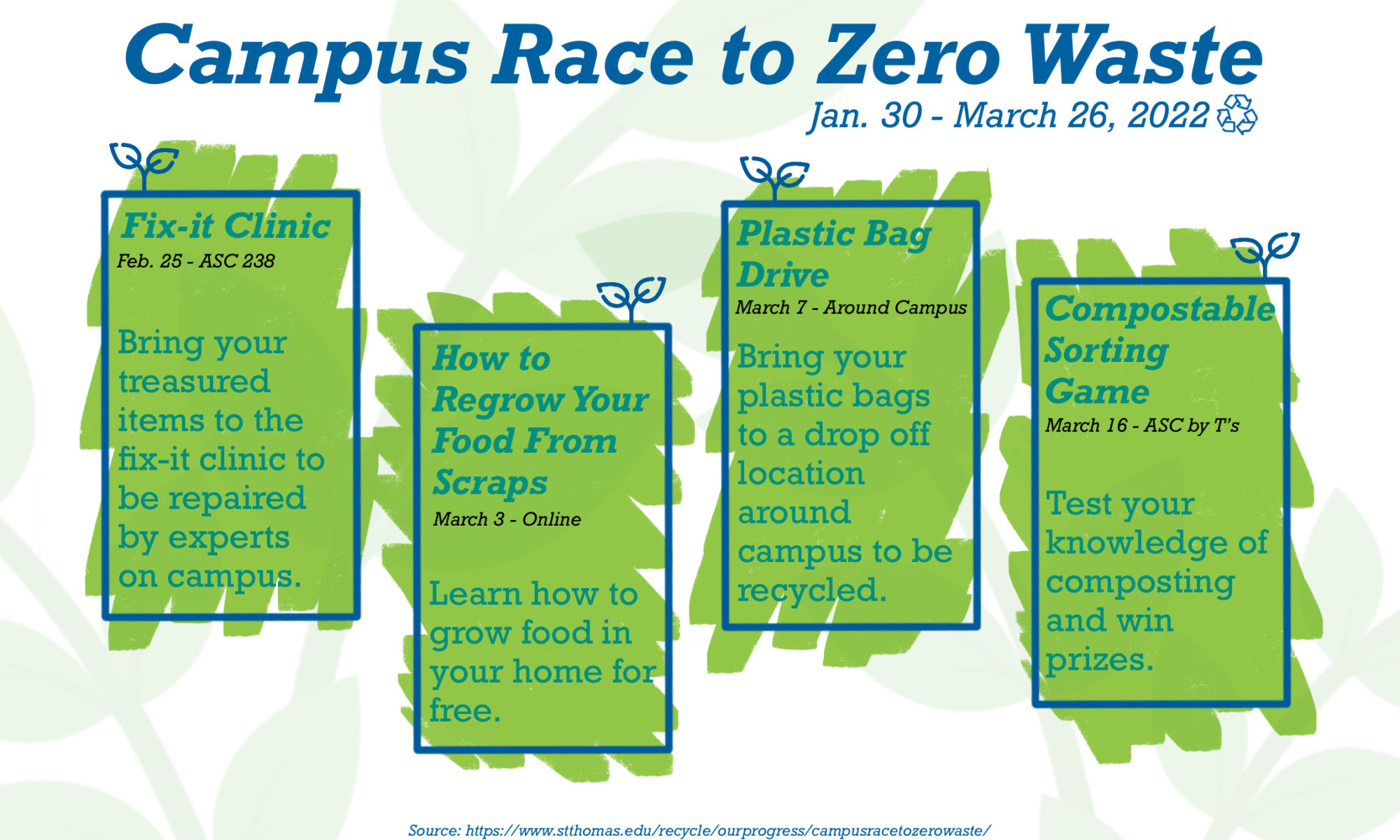
After data from the fall 2021 semester showed that 51% of waste on St. Thomas’ campus wasn’t sorted correctly, the university decided to participate in the Campus Race to Zero Waste, a nationwide competition between colleges and universities to see who can have the largest waste reduction from Jan. 30 to March 26.
Six percent of that 51% of waste included reusable items and food that people could have given away. The university hopes that the competition, which will compare schools’ amount of trash material and specific buildings’ diversion rate, will keep St. Thomas on the path toward sustainability.
“The main purpose is just to reduce and divert as much waste as possible,” Cassie Hagen, Minnesota GreenCorps member, said. “I’ve seen a lot of institutional and department changes, but we really need everybody involved to be more sustainable, and a great way to do that is by reducing and diverting waste. … Individual actions do make a difference.”
The university has already started hosting events to win the competition such as a pop-up book shop that collected 1,141 pounds of books. Within that total, 75 participants took 361 pounds home, and the other 780 pounds were donated to Books for Africa, a nonprofit organization.
The university is hosting a few more activities to get students involved, including a “How to Regrow Your Food From Scraps” event on March 3, a “Plastic Bag Drive” on March 7 and a “Compostable Sorting Game” on March 16.
“Aside from all the events and participating in those, I think one of the main things is really just trying to be mindful of how we get rid of our waste,” Waste and Recovery Facilities Supervisor Shane Philhower said.
Waste and Recovery is located in the Facilities and Design Center on South Campus, and compactors are found in the alley between FDC and the Anderson Parking Garage. Philhower stressed that a lot of waste that comes into waste facilities can be spared from the trash can and moved into either the recycle or compost bin.
“Out of all the waste streams we had, at least in the residence halls, 80% of it was compostable or recyclable and only 20% of it was truly trash,” Philhower said. “So, I think to try to attain these goals, it is going to take everyone’s participation to take that time to be really aware of what they’re doing, and find the best option.”
The university is participating in three main categories in the competition: diversion is the weight of recycled trash, paper and more as a percentage of the school’s waste; food organics is measured by the number of waste minimization activities and the weight of food that is donated; and per capita is a competition to see who can gather the most paper, cardboard, bottles and cans on a per-person basis.
“For our participation in the Race to Zero Waste, we’re doing events that are following the seven R’s, which include: refuse, reuse, reduce, repair, replant, recycle and rot,” Hagen said.
In addition, the university is also participating in two special categories. The One Building Challenge records waste specifically in ASC, and the second involves writing a Case Study with the university’s initiatives after the competition.
Thus far, looking at current results, Hagen believes St Thomas’ sustainability efforts are working and could earn a 15-20 ranking for diversion rate.
Annabelle Wiskus can be reached at wisk9881@stthomas.edu.



